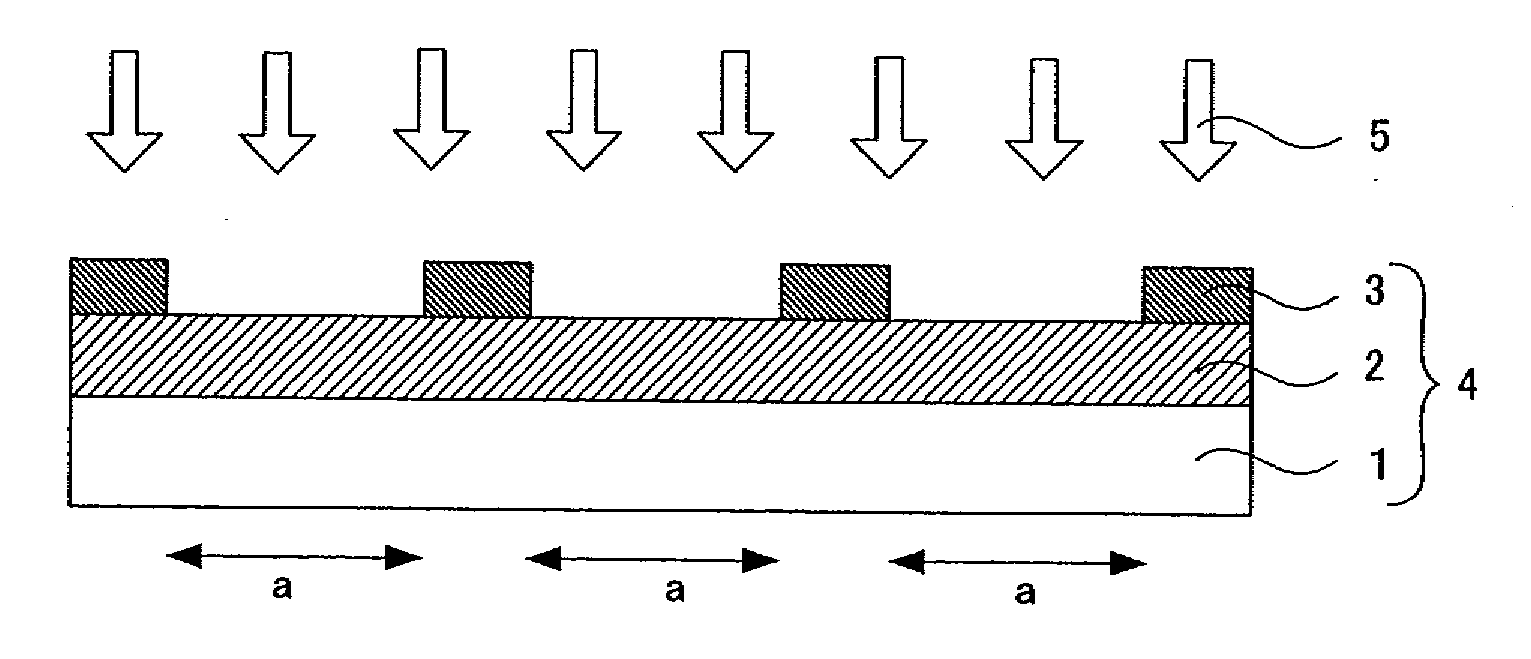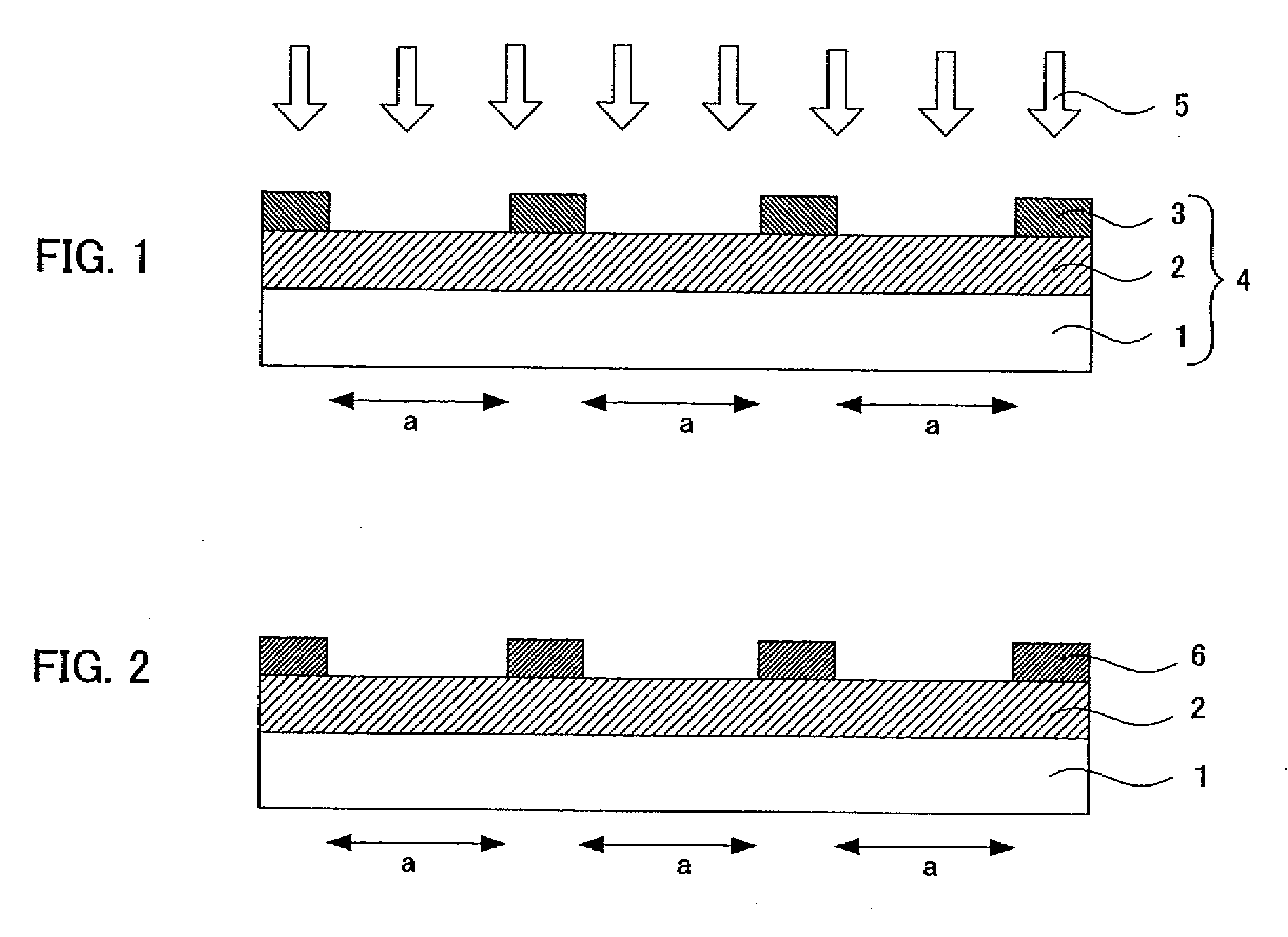Pattern formed body and method for manufacturing same
a technology of forming body and forming method, which is applied in the direction of photomechanical treatment originals, instruments, photomechanical equipment, etc., can solve the problems of waste liquid treatment, low location accuracy, and difficulty in printing process, so as to achieve good adhesion property between the functional part and the base material
- Summary
- Abstract
- Description
- Claims
- Application Information
AI Technical Summary
Benefits of technology
Problems solved by technology
Method used
Image
Examples
examples
1. Formation of an Intermediate Layer
[0082]Mixed and stirred for 5 hours were 1.5 g of decyltrimethoxysilane, 5 g of tetramethoxysilane, and 2 g of 0.1 N hydrochloric acid. The resultant was diluted 10 times with isopropanol, and then the solution was uniformly coated onto a 370 mm×470 mm×0.7 mm glass substrate with a spin coater, so as to yield an intermediate layer having a film thickness of 0.1 μm.
2. Formation of a Resin Layer
[0083]A black resist containing carbon black (V-259 BK resist, manufactured by Nippon Steel Chemical Co., Ltd.) was coated onto the glass substrate, and the resultant was exposed to light, developed and subjected to post-baking treatment to form a resin layer with a light shielding property having a film thickness of 1.0 μm, a width of 20 μm, and an opening part of 280 μm squares.
3. Atmospheric Fluorine Plasma Step
[0084]CF4 and N2 were caused to flow onto the substrate at 10 L / min, and 20 L / min, respectively. This treatment was conducted twice at a transport...
PUM
| Property | Measurement | Unit |
|---|---|---|
| contact angle | aaaaa | aaaaa |
| contact angle | aaaaa | aaaaa |
| distance | aaaaa | aaaaa |
Abstract
Description
Claims
Application Information
 Login to View More
Login to View More - R&D
- Intellectual Property
- Life Sciences
- Materials
- Tech Scout
- Unparalleled Data Quality
- Higher Quality Content
- 60% Fewer Hallucinations
Browse by: Latest US Patents, China's latest patents, Technical Efficacy Thesaurus, Application Domain, Technology Topic, Popular Technical Reports.
© 2025 PatSnap. All rights reserved.Legal|Privacy policy|Modern Slavery Act Transparency Statement|Sitemap|About US| Contact US: help@patsnap.com


